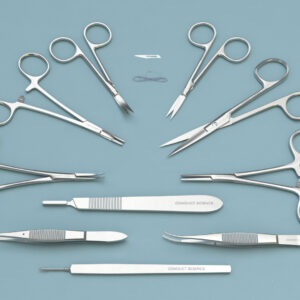$1,299.00
The Scavenging Machine efficiently removes hazardous chemical fumes, odors and waste anesthetic gases (WAGs) vented during the anesthetization processes. in laboratories. With advanced filtration technology and powerful suction, it ensures a safe working environment by capturing and neutralizing volatile compounds. Customizable and easy to use, this system offers tailored solutions for any lab setup.

RWD is a global leader in the design and manufacturing of advanced research and laboratory equipment. Specializing in high-precision instruments for neuroscience, behavioral science, and pharmacology.



Scavenging machines are used in the collection and removal of waste anesthetic gases (WAGs) vented during the anesthetization processes. These systems comprise collection devices, interfaces, and disposal systems. Scavenging machines also help monitor the gases and prevent barotrauma to the subject resulting from a change in incoming and outgoing gas flow (Braz et al., 2020).
Conduct Science offers Scavenging Machines.
Features | Remarks |
|---|---|
Ventilator | Removes the need for ventilator hoods during veterinary anesthesia. |
Mask capacity | Powerful capture for residual anesthetic from 1 to 5 masks. |
Mode Options | Multiple modes: “pull” or “draw” adjustable. |
Connection System | Easy to use. Simply connect to your vaporizer system and insert a canister of activated charcoal. |
Alarms indicator | Two-level alarm (990g and 1010g), indicator light, and buzzer reminders to change the canister and maintain its effectiveness. |
Alarm Function | Alarm function: it has a level one (weight 990g), and level two (1010g) overweight alarm (indicator and buzzer), prompting to replace the filter can in time. |
Certificate | Alarm function: it has a level one (weight 990g), and level two (1010g) overweight alarm (indicator and buzzer), prompting to replace the filter can in time. |
Pressure Pumping | Negative pressure pumping: The pumping flow is large and the size is adjustable. The adjustment range is 35-60LPM, which can realize the exhaust gas recovery of 1-5 different anesthesia channels. |
Noise | Noise reduction system within 50dB. One-click set mute to prevent noise. |
Weighting Function | Weighing function: weigh and display the weight of the gas filter tank at any time to confirm whether its adsorption is saturated |
Display | A wide range of flow rate-8~60LPM, real-time display through LED screen. |
Temperature | An automatic temperature compensation system can help to run stably even at 5°C-40°C. |
Scavenging machines are used in the collection and removal of waste anesthetic gases (WAGs) vented during the anesthetization processes. These systems comprise collection devices, interfaces, and disposal systems (Lucio et al., 2018). The practice of WAGs scavenging is done to prevent a variety of hazards associated with anesthetic gas pollution of the operating area; this includes risks to personnel resulting from chronic exposure to low levels of some inhalational anesthetics. Scavenging machines also help monitor the gases and prevent barotrauma to the subject resulting from a change in incoming and outgoing gas flow.
Scavenging machines are of two types: active and passive. Active scavenging machines make use of fans or vacuum pumps to create a continuous low pressure in the interface to draw the waste gases into the disposal systems. On the other hand, passive scavenging machines utilize the pressure generated in the breathing circuit to exhaust the gases to the interface. The difference between the two types is that the active systems protect the subject’s airway from suction and build-up of positive pressure while the passive systems protect from the build-up of positive pressure only.
ConductScience’s anesthesia scavenging machine (size: 21.5 x 21.5 x17.0 cm) eliminates the need for a ventilator hood and provides multiple modes of functions (adjustable pull or draw feature). The system requires a simple connection to the vaporizer system and a canister of activated charcoal. The machine is also equipped with a two-level alarm, an indicator light, and a buzzer reminder, for notification of canister change. The equipment is capable of capturing residual anesthesia of up to 5 masks.
Anesthetic gas scavenging machines comprise a gas collection assembly that contains tubes connected to adjustable pressure limiting (APL) valve and vent relief valve; transfer tubing; scavenging interface; gas disposal tubing, used for carrying gas from interface to disposal assembly; and gas disposal assembly..
The scavenger interface is a critical component of the machine and helps protect the breathing circuit from excessive positive or negative pressure. The scavenger machines can also be distinguished based on the type of interface, which can be either open or closed. The open interface design is often seen in the newer gas machines. These interfaces are open to the room and rely on continuous suction. Closed interfaces, however, make use of valves and are often seen in older machines.
The most commonly used scavenging systems are passive scavenging machines. The system takes advantage of the positive pressure of the gas in the anesthetic machine to forward the waste anesthetic gases to the scavenging device. The use of discharge tubing, room ventilation, and activated charcoal adsorption canisters are the commonly found passive configurations in a laboratory setup.
It is important to ensure that the system is correctly set-up and tested for leaks. When using face masks to deliver the anesthetics, it is crucial to ensure that the masks are of the correct fit. In the case of using active scavenging machines, it is recommended that either the system is placed under a fume hood, a local exhaust is used, or an active suction to the charcoal canister is installed . While using passive scavenger systems, ensure that each exhaust port, nose cone, and induction chamber, has a dedicated charcoal canister and that the canister is disposed of once it has expired. Use low flow rates and flush the anesthesia system with oxygen before opening the circuit. It is important to note that activated charcoal is ineffective in the removal of nitrous oxide. Regular service of the scavenger machine is also important to ensure its proper functioning (Smith, 2010).
| Weight | 9.59 lbs |
|---|---|
| Dimensions | 34 × 34 × 34 cm |
| Brand | RWD |
You must be logged in to post a review.
Noise reduction system within 50dB. One click set mute to prevent noise.
Reviews
There are no reviews yet.